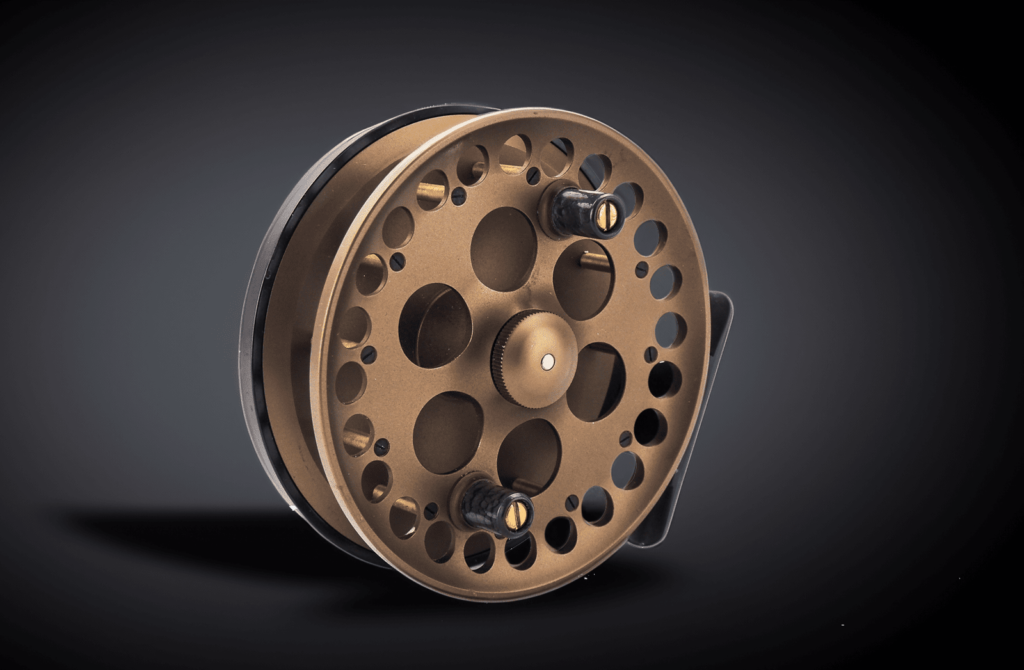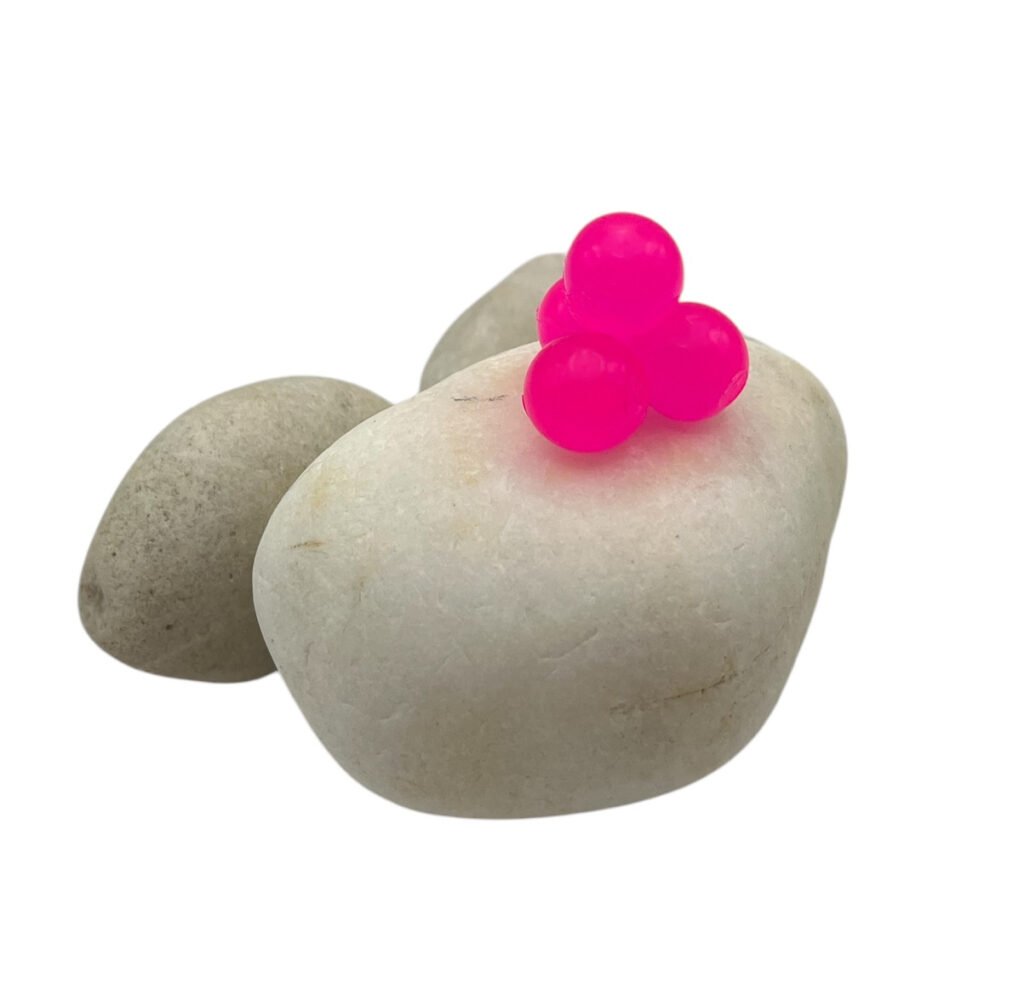Centerpin Fishing for Salmon: Tips & Techniques to Succeed
Feeling that first tug from a salmon is exhilarating. For years, we’ve guided anglers from British Columbia to the Great Lakes. We’ve seen them grow from beginners to confident salmon catchers. That’s why we’re sharing our best centerpin fishing for salmon tips to help you succeed.
Our gear, like the BeadnFloat Soft Beads mimics salmon’s natural movements1.

Imagine your float moving smoothly downstream, your rod dancing with the current. This is where salmon fishing tips begin. A long rod (12-15 feet) gives you control, and Raven Mainline’s buoyancy keeps your bait visible1. Add a Centerpin reel’s smooth drifts, and you’re already ahead1.
Don’t overlook the basics. Anglers miss chances by ignoring them. But when you get it right, even clear-water rivers can yield results. Just remember to match hook sizes to the water’s clarity1.
Seasonal timing is also key. Fall and spring offer the best times, but winter can be good too if you read the currents right2. Our trick? Covering water methodically and using the “trotting” technique to trigger strikes2. With these tips, you’re not just fishing—you’re hunting. Let’s explore how to make every cast count.
Introduction to Centerpin Fishing for Salmon
Centerpin fishing for salmon is a big deal in Canadian angling. It’s rooted in Ontario’s fishing traditions. Anglers from this area have honed this technique over years, making it a favorite for catching salmon in rivers and streams.
“Most or all the guys with more than 40 years of Centerpin fishing experience all seem to come from Ontario,” highlighting its regional legacy and proven effectiveness.
For beginners, understanding the setup is key. This method uses a free-spooling reel on a long rod (10–14 feet) to let bait drift naturally3. Rods like the Douglas LRS P11632M or P13644M are perfect for feeling subtle bites3. The rig includes a float, split shots, and a fluorocarbon leader, with line setups changing based on water conditions45.
Key gear includes:
- Reels without drag systems for natural drifts5
- Leaders of 2.5–3 feet using 3–5lb test for delicate presentations5
- Baits like BeadnFloat Soft Beads paired with egg sacs or wax worms4
Getting good at this takes time, but it’s worth it. Start with the right gear and learn to control your drift. Our guide will help you get started, covering the basics for fishing in any river. Choosing the right rig and bait is key for catching salmon, even in pressured areas.
Essential Gear for Successful Salmon Centerpin Fishing
When picking the best centerpin reels, focus on mechanical details. Reels with 4.5-5 inch spools hold more line, which is important for fighting strong fish6. Look for reels with sealed bearings to resist corrosion and ensure smooth operation. Islander Steelheader reels are a good choice for this6. Lighter reels, like the Drennan Loafer system, also help reduce arm strain during long fishing sessions6.
Choosing the right line is also important. Use 40-pound Power Pro braid or monofilament for mainlines to detect bites well6. For leaders, Seaguar Fluorocarbon in 6–25 lb test is good because it’s strong and doesn’t scare fish6. Add micro swivels and split shots to keep the bait moving naturally6.
BeadnFloat’s soft beads make presentations better. Use 6mm/8mm beads in clear water to look like natural eggs. For murky water, 14mm-19mm beads are best6. Their soft texture and buoyancy help fish hold the bait longer, increasing hook-up rates. Match bead sizes with hook sizes: 10mm beads with size 6 hooks for coho, and 16mm beads with 4/0 hooks for chinook6.
Choosing the right gear combination is critical. Use Raven FM floats (4-6.2 grams) in medium rivers with 8-pound Raven Mainline for controlled drifts. In stained waters, the Blood Run float system with Sufix Elite 10-pound line keeps bait visible and strong8. Always choose reels with corrosion-resistant bodies and high-grade bearings for durability6.
Top Locations for Centerpin Salmon Fishing in Canada
Canada’s rivers are perfect for centerpin fishing for salmon. Key areas like British Columbia’s Lower Mainland rivers are great for catching different salmon species9. The Fraser River and its tributaries, such as Chilliwack/Vedder, Capilano, and Squamish, offer great fishing9. Ontario’s Niagara River is also excellent for its deep waters, perfect for centerpin fishing2.

- British Columbia: Chilliwack/Vedder and Capilano rivers host abundant salmon runs9.
- Ontario: The Great Lakes tributaries, including the Credit River and Bronte Creek, see active fall and spring runs2.
- Eastern Canada: Miramichi and Restigouche rivers in New Brunswick are renowned for Atlantic salmon9.
Look for river sections with 3–12 foot depths and moderate currents. Tailouts below rapids and inside bends are good spots for salmon. Use BeadnFloat soft beads in orange and pink for the best results. These locations are known for their success with the right gear and fishing tips.
Centerpin Fishing Techniques for Different Salmon Species
One of the main advantages of a Centerpin reel is not only does the line come off the reel smoother but it’s much easier to control the drift, critical for success1.
Adjusting your gear to match the salmon species you’re after can really boost your catch. Here are some effective methods for each:
Float Fishing Strategies for King (Chinook) Salmon
King salmon like deep, slow drifts. Use rods that are 12-15ft long with 15-20lb line1. Pair BeadnFloat soft beads with 12-16mm floats. Fish in 6-12ft depths where the current is steady2.
A slow retrieve with occasional twitches can mimic natural prey movements.
Approaches for Coho (Silver) Salmon
Coho prefer faster currents. Choose 11-13ft rods with 10-12lb line1. Use 0.26mm fluorocarbon leaders2 with roe or plastic worms. Place floats 2-3ft above hooks to stay in touch with swift water10.
Methods for Atlantic Salmon
Atlantic salmon in coastal rivers need a gentle touch. Go for 13ft rods with 8-10lb Raven Tackle line2. Employ 0.20mm leaders (6 lb test)2 with fly patterns or live bait. Drift slowly near river bends where fish often hide10.
Techniques for Pink, Sockeye, and Chum Salmon
Smaller species like pink salmon do well with lighter gear. Use 10lb line and 0.20mm leaders2. Fish near gravel beds with tiny beads or small jures. Adjust float depth with split shot to keep in touch10.
Mastering these centerpin fishing techniques and salmon fishing techniques means matching your gear to the fish’s behavior. Always focus on smooth drift control and line management for the best presentations1.
Seasonal Strategies for Centerpin Salmon Success
Changing centerpin fishing techniques with the seasons is vital for catching salmon in Canada’s rivers. In early season (August–September), act fast. Fresh fish are eager, so try quick retrieves with bright BeadnFloat Soft Beads like 10–14mm in chartreuse or hot pink. Look for river mouths and deep pools where salmon rest after coming from lakes11.

By October, fish move into river systems12. Aim for deep runs and seams behind boulders. Use natural colors like peach or salmon egg shades in 8–12mm beads. Slow drifts with tight line control increase your chances of a strike. Steelhead are most active after rains, so fish after storms when rivers are high12.
In late season (November–December), fish slow down after spawning. Use smaller 6–10mm beads in muted colors like cream or black. Fish deep, slow pools carefully, focusing on precise presentations. When water drops below 40°F, drag beads slowly near the bottom. Always adjust line speed and leader setups based on flow and fish position11.
- Early season: Bright beads, fast retrieves
- Middle season: Natural colours, slow drifts
- Late season: Subtle hues, deep-water tactics
Water temperature controls how fast you should fish. In warmer 45–55°F water, active fish like moderate action. Below 40°F, slow down completely. Use the right leader setups with fluorocarbon and matching bead sizes to species for consistent hookups11.
Common Mistakes to Avoid When Centerpin Fishing for Salmon
Mastering centerpin fishing for salmon requires precision. Avoid these common mistakes to increase your chances of success:
“The reason they caught more fish was because of speed… 60% of the time, the angler matching the bottom current speed outperformed others.”
- Drift speed mismatch: Salmon don’t like unnatural motion. Make sure your bait drifts at the bottom current’s speed, not the surface. Many anglers make this mistake, losing opportunities.
- Float errors: Big floats13 can cause drag. Adjust your float’s depth as the riverbed changes. Use BeadnFloat Soft Beads that match the water’s clarity.
- Line and tackle flaws: Too much slack or tension can mess up your drift. Use 11-13ft rods14 for better control. In clear water, avoid heavy leaders.
- Reel neglect: Saltwater or silt can damage reels. Clean your reels after each trip and lubricate the bearings for centerpin reel maintenance for salmon fishing.
- Hook-setting technique: Jerking hooks won’t work with centerpin rods. Instead, sweep the rod sideways to set hooks firmly.
| Mistake | Solution |
|---|---|
| Ignoring bottom current speed | Use a sweep cast to slow presentation |
| Fixed float depth | Adjust depth markers every 10 casts |
| Improper line management | Feed line smoothly with non-casting hand |
Skipping water sections can lead to missed fish. Cover each pool section in 1-2ft increments. Regular centerpin reel maintenance for salmon fishing prevents mid-fish failures. Keep BeadnFloat beads clean and check line angles daily.
Conclusion: Taking Your Centerpin Salmon Fishing to the Next Level
There’s a saying: 10% of anglers catch 90% of the fish. This truth is seen in Canadian rivers. To be among the 10%, you need to be precise and adaptable in your fishing.
Start by getting your gear right. Use 18–20-inch shot lines with 14–16-inch leaders. Add Raven Micro Swivels and Sure Shot weights15. Reels like the 4.25″ Adcock Stanton model or the 5″ variants are key for smooth drifts16.
Perfecting your presentation is key. Focus on four top baits: plastic worms, spawn bags, trout beads, and flies. Adjust leader tensions to match the current12. BeadnFloat Soft Beads in sizes 6mm to 19mm are vital. Smaller beads work best in clear water, while larger ones are better in stained flows. Try different sizes during your session to see what salmon like12.
Practice your casting every day. The Wallis Cast is great for distance, while the Nottingham Cast is better for tight spots16. Keep a log of your trips. Note which bead sizes work best in different conditions. Beginners should get guidance. Even one guided trip can help a lot.
Getting better at salmon fishing means always improving. Try out Adcock Stanton reels and BeadnFloat’s bead range. Work on controlling your float speed. Every small change, from bead size to hook size, brings you closer to being one of the top fishers.
Source Links
- https://troutandsteelhead.net/centerpin-fishing-for-salmon/
- https://aperfectdrift.com/ontario-centerpin-fishing/
- https://douglasoutdoors.com/blog/centerpin-fishing-setup-and-tips/
- https://www.shoptackleshack.com/blogs/the-tackle-blogs/what-is-centerpin-fishing-the-basics-to-get-starte/?srsltid=AfmBOooz4F7gmy5Yf8-a2MH8pFc43cHIndms2K0nymww4kHfnodzRbKr
- https://onthewater.com/discover-centerpin-fishing
- https://flygyde.com/products/centerpin-fishing?srsltid=AfmBOoq7_oxem-H_kGxgttpgEB7LphjKoQdCeErp0iIFZqw0GYn-FMWH
- https://troutandsteelhead.net/centerpin-fishing-gear/
- https://ontariotroutandsteelhead.com/best-centerpin-line/
- https://www.gofishbc.com/learn/fishing-tips/river-fishing/salmon-fishing-in-the-lower-mainland-rivers-tips-and-techniques/
- https://gosalmonfishing.com/mooching-center-pin-reels/
- https://troutandsteelhead.net/centerpin-fishing-for-beginners/
- https://ontariotroutandsteelhead.com/ontario-salmon/
- https://www.fishingwithrod.com/articles/river_fishing/those_picky_silvers.html
- https://www.ifish.net/threads/center-pin-vs-spinning.317827/
- https://ontariotroutandsteelhead.com/steelhead-leader-setup/
- https://adcockstantonreels.com/centrepin-steelhead-fishing/




Add comment